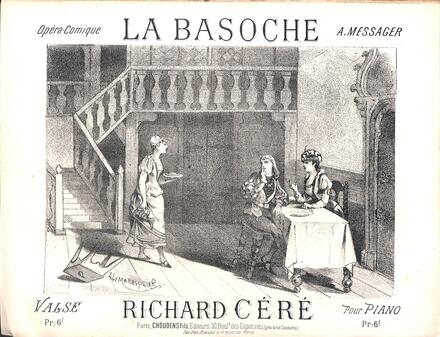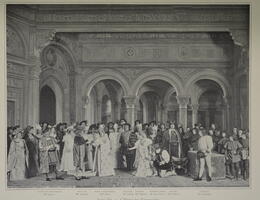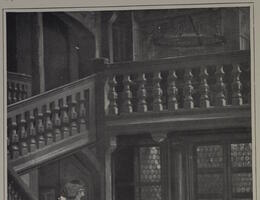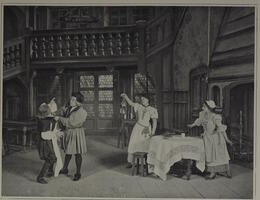La Basoche

Opéra-comique in 3 acts, first performed on 30 May 1890 at the Opéra-Comique (then in temporary residence at the Théâtre Lyrique).
Messager was just recovering from the failure of his opérette Le Mari de la Reine, premièred in 1889 at the Théâtre des Bouffes-Parisiens, when he began work on La Basoche. The success of Isoline (1888) was not enough to establish his career as a composer, and it was as a conductor that he worked in the theatres of Paris. Albert Carré, then director of the Théâtre du Vaudeville, provided the libretto for his new work, and thus began a close friendship and collaboration that led them, eight years later, to become joint directors of the Opéra-Comique. Under the pre-revolutionary French monarchy, the “Basoche” was a guild of students, legal clerks of the Paris court system, which each year elected a new “king”, who was required to be a bachelor. In this opéra-comique, set in 1514, the newly elected “king”, Clément Marot, is thus obliged to hide the existence of his wife, Colette. She arrives in Paris and, having been told that her husband’s position means that their marriage has for the time being to be kept secret, finds work at a tavern. The next day Louis XII is to receive in Paris his new young wife, Princess Mary, whom he has married by proxy. The procession of the king of the Basoche comes along and Colette, recognising her husband, takes Marot to be the real king, while Mary thinks he must be her husband. There follows a whole series of misunderstandings… Fun prevails over any idea of verisimilitude, and the libretto, very well written, was given an enthusiastic reception. Messager’s score, lively, dense and showing great finesse, includes many fine pieces, including Colette’s Pastourelle, Marot’s “À ton amour j’ai préféré cette chimère”, and the Duc de Longueville’s comic aria “Elle m’aime” –the latter earned Lucien Fugère an ovation at the première. Carré was a stage director himself, but he left the mise en scène to Louis Paravey, director of the Opéra-Comique. La Basoche was a resounding success with an initial run of eighty performances. It was revived in 1900 for another long run at the Opéra-Comique (Salle Favart), then directed by Carré, with Messager conducting.
Scientific publications
Publication




